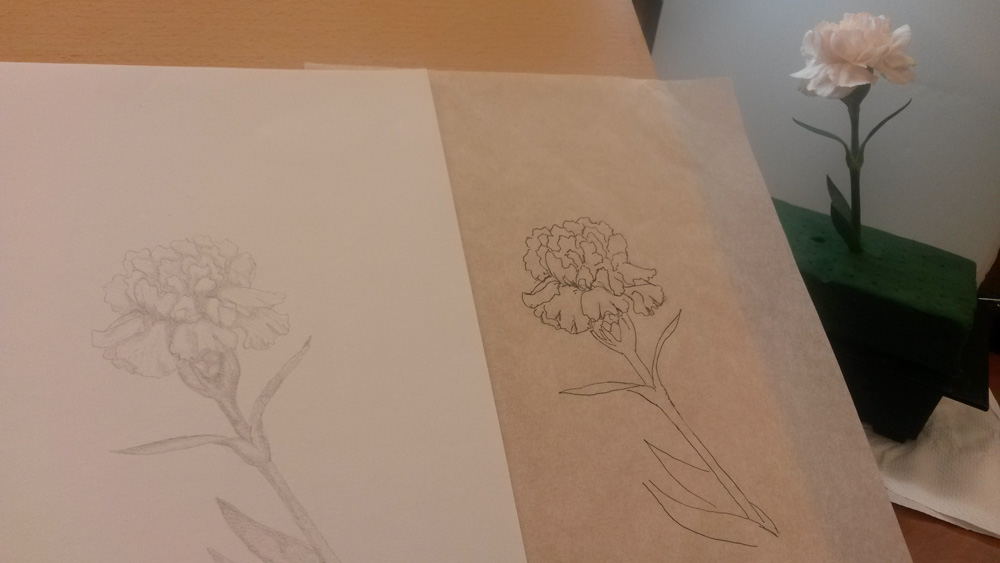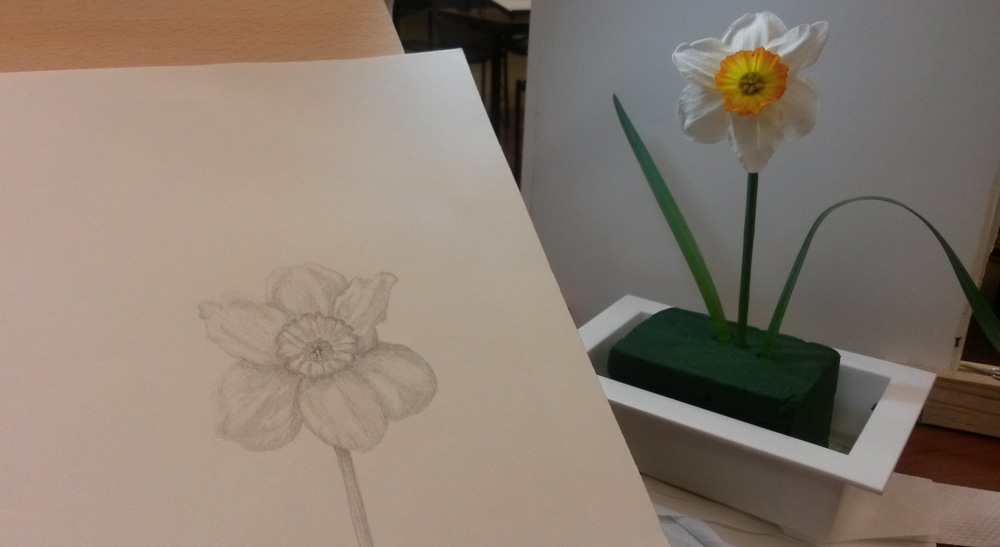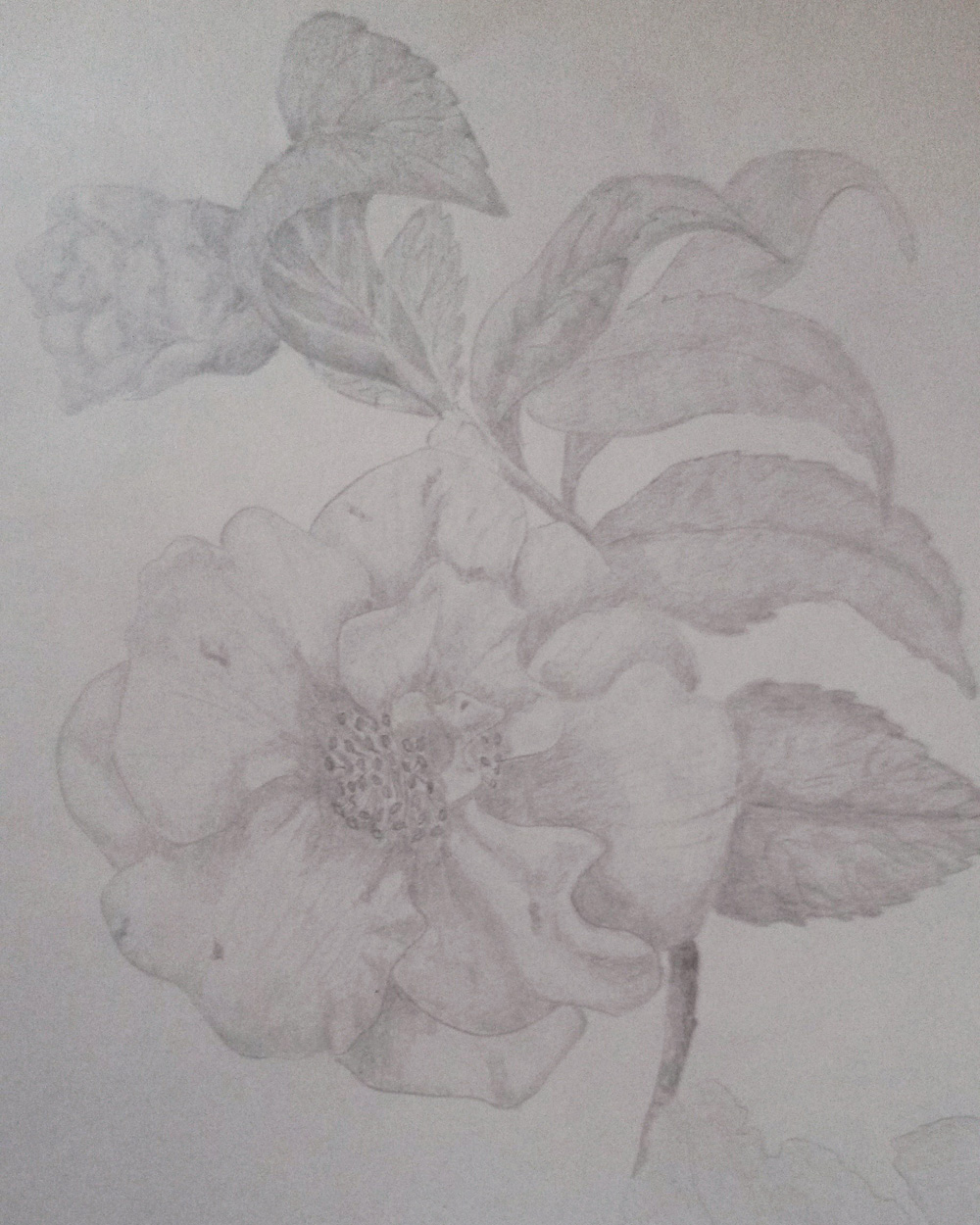Drawing Flowers in The Garden
At first I felt a little out of place. I was a teenage student in a group of middle-aged women, some of whom were far beyond me in skill drawing flowers. The class, Introduction to Botanical Illustration, was the first I had ever taken at Lewis Ginter Botanical Garden, and I wasn’t sure what to expect. Would my artistic skill be up to par? Would I discover a new, fascinating interest?
Botanical Illustration: The Scientific Art of Drawing Flowers

A carnation (Dianthus caryophyllus) — one of the first pieces I completed in Introduction to Botanical Illustration class. Graphite on paper. Illustration by Mariah Hulen.
Before this class, I knew nothing about drawing flowers or plants in such a scientific setting, but something about the idea intrigued me. I have long held an appreciation for plants, having for years been exposed to the philosophies of Charlotte Mason and her style of nature-based, outdoor learning and experience. However, I had never actually sat down to examine and depict plants in such a detailed way, combining both science and art in one pursuit.

I found the depiction of light and dark tones to be especially important while drawing white flowers such as the daffodil (Narcissus). Graphite on paper. Illustration by Mariah Hulen.
The introduction to drawing class corresponds to, and is a prerequisite for, Lewis Ginter’s Garden education Certificate in Botanical Illustration. This certificate is just one of the ways that the Garden enriches the lives of individuals from all walks of life — whether teachers or students, artists or business people, young or old. The Certificate requires the completion of a variety of classes (e.g. Botany for Botanical Artists and Introduction to Watercolor) and gives students in the
Certificate program the opportunity to be mentored by practiced botanical artists. The teachers of these classes are well-versed in both art and science and have years of experience illustrating and drawing flowers and plants.
As a young student, I also found it fascinating to be able to learn from members of my community, whether by examining their drawing techniques or by listening to stories of their lives and personal experiences. Over lunch each Saturday, in Lewis Ginter’s Garden Cafe, we discussed topics ranging from art and botany to glassblowing and operatic musicology. The atmosphere was enhanced by the view outside the Cafe windows and the botanical illustrations of Alexandre Descubes gracing the surrounding walls.
In this class, we also had the privilege of taking a tour, guided by librarian Janet Woody, of the basement of Lewis Ginter’s Kelly Education Center, directly below the Lora Robins Library. There we explored garden archives and Descubes’ botanical illustrations. While the Garden maintains a large and varied collection of Descubes’ work, I found his drawings and analysis of Asian plants incredibly interesting.
The most enjoyable aspect of this class by far though was examining and drawing freshly-cut plants, gathered directly from Lewis Ginter and the gardens of volunteer Judith Towers — or our “garden fairy godmother” as we called her. Each class brought a new collection of pine cones, seed pods, leaves, vines, and (my personal favorite) flowers. I also tried to use any possible chance to meander around the gardens looking for the first signs of spring and the budding of new plant growth. While I am still not the most practiced artist, I have truly been inspired by my experience in this class to grow my drawing skills. I look forward to taking more classes at Lewis Ginter Botanical Garden.
